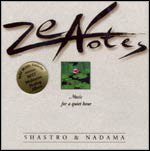 This exercise is known as Paschimottanasana which literally translates as ‘intense stretch of the west’. The front of the body is known as the East side and the back side is known as the West side. This pose is helpful in relieving stress and anxiety.
This exercise is known as Paschimottanasana which literally translates as ‘intense stretch of the west’. The front of the body is known as the East side and the back side is known as the West side. This pose is helpful in relieving stress and anxiety.
- Sit on the floor with your legs straight out in front of you. It will be more comfortable if you support your buttocks on a thin cushion or folded blanket.
- Outstretch the arms and then raise them above your head.
- Inhale and stretch the spine upwards as you reach forward to grasp your toes.
- Begin to slowly bring the back forward as you exhale.
- Try to keep the spine as straight as you can by swiveling from the hips.
- Keep the thighs, calves and heels in contact with the floor at all times.
- Keep the neck naturally extended from the spine as you stretch further into the forward bend.
- You should finish the movement with your stomach resting on your thighs, your body relaxed and reaching out to hold your ankles or shins and gently exhaling.
- As you get used to this stretch you should aim to hold your hands around the soles of your feet.
- As you inhale raise your head and resume the upright position with your hands by your sides and palms flat on the floor.
This is not an easy asana and needs practice and patience. Once you have assumed the position try to hold it for 30 seconds and gradually lengthen the time to up to three minutes.
Sufferers from a back injury should seek medical advice if in any doubt that the pose will cause them problems. Asthma sufferers may also be affected.
The Benefits of The Seated Forward Bend include;-
- A calming effect on the brain by relieving stress and mild depression.
- Soothes headaches and anxiety attacks.
- Helps relieve the symptoms of menopause and menstrual discomfort.
- Stretches the spine, shoulders and hamstrings.
- Stimulates the liver, kidneys, ovaries and uterus and improves digestion.
- Yogis have traditionally felt that Paschimottanasana increases appetite, reduces obesity and cures diseases.
Yoga - The Seated Forward Bend

